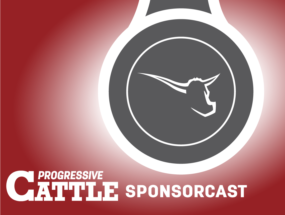Through the first half of 2024, it looked like the U.S. might be climbing out of the drought that has plagued big chunks of the country for the last half-decade. The angry reds on the drought monitor maps started turning lighter shades of orange, yellow, even white. The El Nino the ag world had been waiting for was finally here.
And then, it wasn’t.
During the CattleFax Market Outlook Seminar at CattleCon on Feb. 6, CattleFax meteorologist and atmospheric scientist Matt Makens walked cattle producers through the impacts last year’s weather will have on this year’s production, and what they can probably expect from 2025’s weather.
“In early June of last year,” Makens said, “we were at the lowest drought levels in more than four years. It was pretty remarkable for a short-lived and arguably weaker El Nino event.”
Surface temperatures in the Pacific Ocean dropped again in the latter half of 2024, bringing the balance back to neutral ground for a while, before La Nina conditions once again firmly took hold in mid-December. That led to lower temperatures through the winter across much of North America. Moisture levels were perfect for a majority of producers planting winter wheat, but the cold later in the winter is expected to have a negative impact on the overall crop (though, notably, that is yet to be confirmed).
Of course, continued La Nina and drought conditions have producers wondering, How long can this last? Surely we’re due for some wet years, right? Surely El Nino is ready to come and stay a while, right?
Not necessarily, Makens cautioned.
“We live in a probability-based world,” he said. “We’re not betting on averages; we’re betting on probabilities. Let’s stop thinking of weather as an average. It’s a probability of occurrence.”
And based on historical models and current conditions, Makens says, most probably weather outlook for 2025 includes, among other things, the following:
- Warmer spring temperatures across most of the country, except for the Pacific Northwest
- A dry spring in the Southwest and Plains, with hopeful optimism for good moisture in the Northwest
- High temperatures throughout the summer in the West
- A strong monsoon in the Southwest through the summer, but overall dry conditions throughout the country
- A promising moisture outlook in the South and Southwest in late summer/early fall
- Growing drought across the High Plains and Pacific Northwest, with the possibility for another intense wildfire season
- Overall, continued droughty conditions throughout much of cattle country
Makens pointed out that while La Nina effects may be weaker in 2024 than in years past, even an extended neutral period – with neither La Nina nor El Nino taking the driver’s seat – will likely result in drought expanding.
“Current data show the monsoon is likely to produce more moisture this year than last,” Makens said. “A strong enough monsoon can decrease precipitation across the central Corn Belt. … Somebody in the northern Corn Belt – whether it be Iowa, northern Illinois, southern Wisconsin – somebody in that region is going be downright dry from mid-June through mid-July,” Makens said. “It’s bad timing. There’s going to be a pocket of dry there, and you’re going to hear the term ‘flash drought.’”
So what does it all mean, and will the U.S. ever enjoy wetter-than-normal conditions again? Based on historical weather patterns tracked over the last century-plus, Makens believes that while the next year or two will likely be fairly dry, there is good climate news on the horizon.
“I think it’s not just a La Nina this year; we do it again next year,” he said. “But we’re closing in on the end of this cycle and getting into a wetter phase within the next five to 10 years.”









